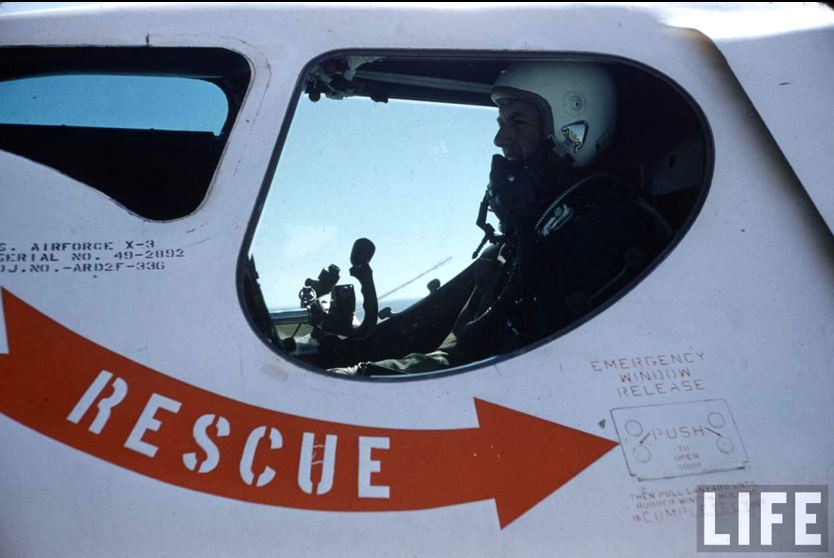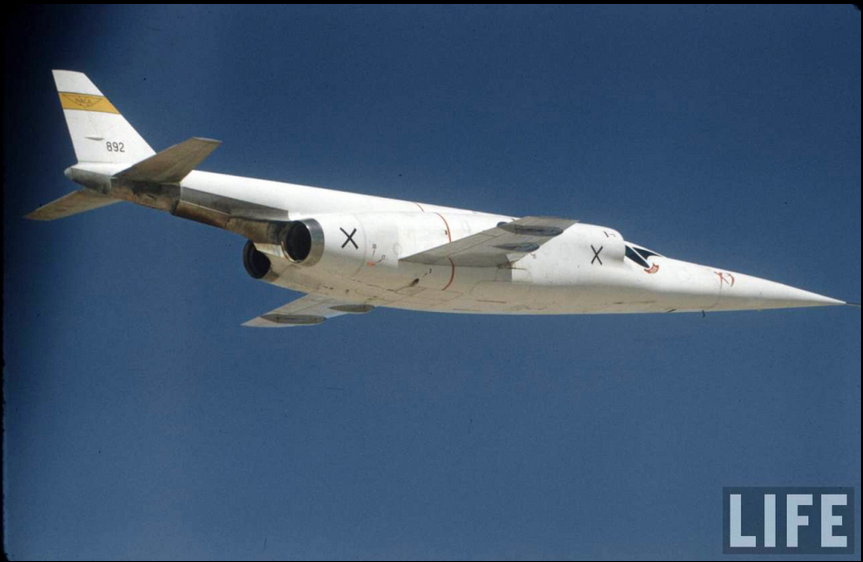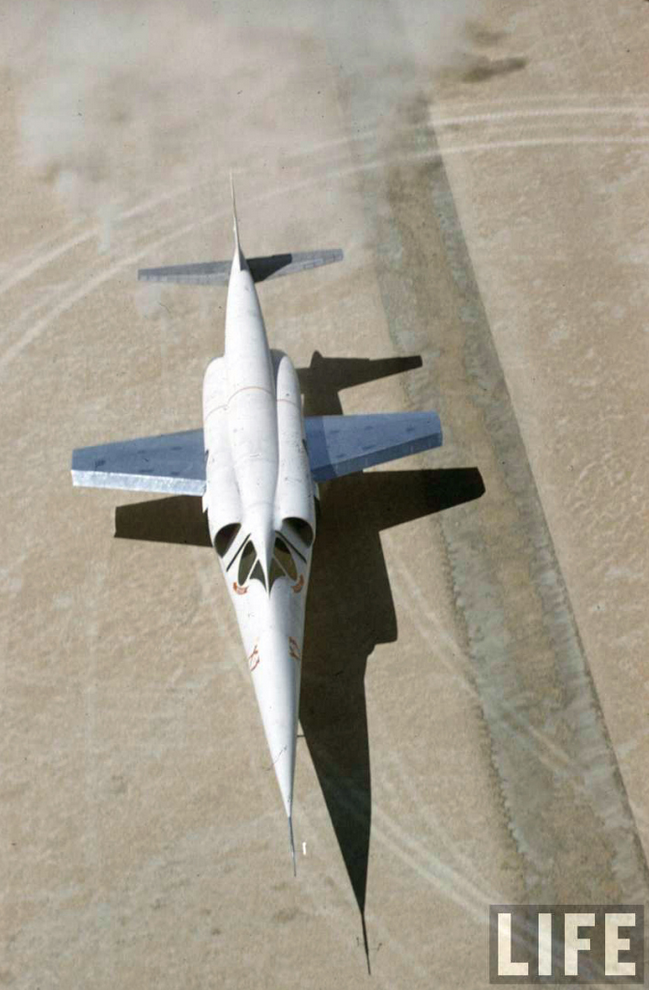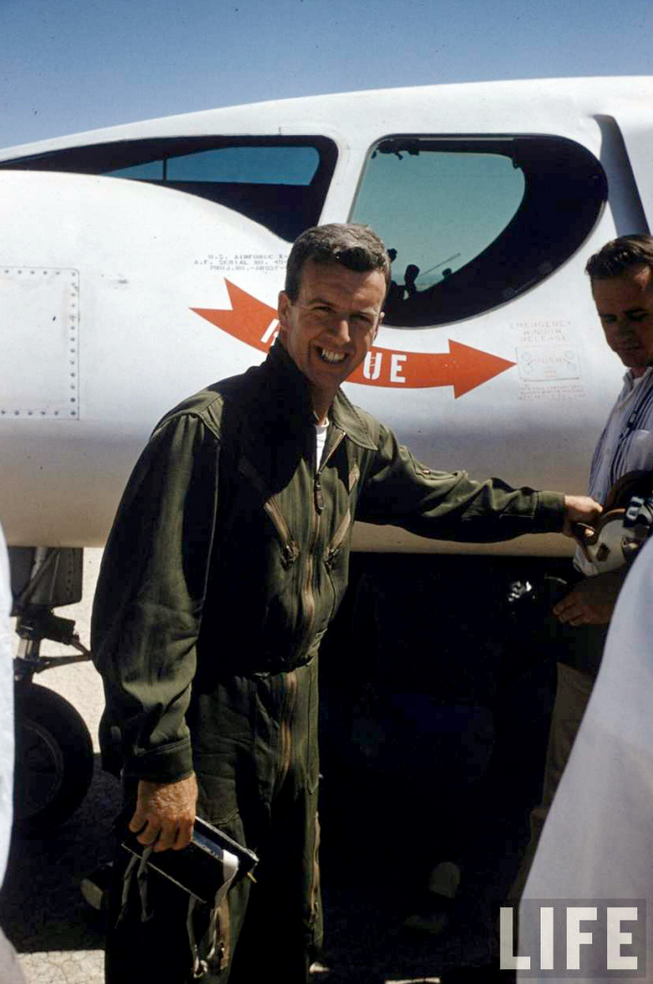
October 27, 1954: Between August 1954 and May 1956, Joseph A. Walker, the National Advisory Committee for Aeronautics’ chief project test pilot for the Douglas X-3 supersonic research aircraft, made twenty research flights in the “Stiletto.”
On the tenth flight, 27 October, Walker took the X-3 to an altitude of 30,000 feet (9,144 meters). With the rudder centered, he put the X-3 into abrupt left aileron rolls, first at 0.92 Mach and then at Mach 1.05. Both times, the aircraft violently yawed to the right and then pitched down. Walker was able to recover before the X-3 was completely out of control.

This was a new and little understood condition called inertial roll coupling. It was a result of the aircraft’s mass being concentrated within its fuselage, the gyroscopic effect of the turbojet engines and the inability of the wings and control surfaces to stabilize the airplane and overcome its rolling tendency. (Just two weeks earlier, North American Aviation’s Chief Test Pilot George S. Welch had been killed when the F-100A Super Sabre that he was testing also encountered inertial roll coupling and disintegrated.)
A post-flight inspection found that the X-3 had reached its maximum design load. The airplane was grounded for the next 11 months.

 The Douglas X-3, serial number 49-2892, was built for the Air Force and NACA to explore flight in the Mach 1 to Mach 2 range. It was radically shaped, with a needle-sharp nose, very long thin fuselage and small straight wings. Two X-3 aircraft had been ordered from Douglas, but only one completed.
The Douglas X-3, serial number 49-2892, was built for the Air Force and NACA to explore flight in the Mach 1 to Mach 2 range. It was radically shaped, with a needle-sharp nose, very long thin fuselage and small straight wings. Two X-3 aircraft had been ordered from Douglas, but only one completed.
The X-3 was 66 feet, 9 inches (20.345 meters) long, with a wing span of just 22 feet, 8.25 inches (6.915 meters). The overall height was 12 feet, 6.3 inches (3.818 meters). The X-3 had an empty weight of 16,120 pounds (7,312 kilograms) and maximum takeoff weight of 23,840 pounds (10,814 kilograms).
 It was to have been powered by two Westinghouse J46 engines, but when those were unsatisfactory, two Westinghouse XJ34-WE-17 engines were substituted. This was an axial flow turbojet with an 11-stage compressor and 2-stage turbine. It was rated at 3,370 pounds (14.99 kilonewtons) of thrust, and 4,900 pounds (21.80 kilonewtons) with afterburner. The XJ34-WE-17 was 14 feet, 9.0 inches (4.496 meters) long, 2 feet, 1.0 inch (0.635 meters) in diameter and weighed 1,698 pounds (770 kilograms).
It was to have been powered by two Westinghouse J46 engines, but when those were unsatisfactory, two Westinghouse XJ34-WE-17 engines were substituted. This was an axial flow turbojet with an 11-stage compressor and 2-stage turbine. It was rated at 3,370 pounds (14.99 kilonewtons) of thrust, and 4,900 pounds (21.80 kilonewtons) with afterburner. The XJ34-WE-17 was 14 feet, 9.0 inches (4.496 meters) long, 2 feet, 1.0 inch (0.635 meters) in diameter and weighed 1,698 pounds (770 kilograms).
The X-3 had a maximum speed of 706 miles per hour (1,136 kilometers per hour) and a service ceiling of 38,000 feet (11,582 meters).
The X-3 was very underpowered with the J37 engines, and could just reach Mach 1 in a shallow dive. The X-3′s highest speed, Mach 1.208, required a 30° dive. It was therefore never able to be used in flight testing the supersonic speed range for which it was designed. Because of its design characteristics, though, it was very useful in exploring stability and control in the transonic range.
At one point, replacing the X-3’s turbojet engines with two Reaction Motors XLR-11 rocket engines was considered. Predictions were that a rocket-powered X-3 could reach Mach 4.2. However, with Mach 2 Lockheed F-104 becoming operational and North American Aviation’s X-15 hypersonic research rocketplane under construction, the idea was dropped. Technology had passed the X-3 by.
In addition to Douglas Aircraft test pilot Bill Bridgeman, the Douglas X-3 was flown by Air Force test pilots Lieutenant Colonel Frank Everest and Major Chuck Yeager and NACA pilot Joe Walker.
Joe Walker resumed flight testing the X-3 in 1955. Its final flight was 23 May 1956. After the flight test program came to an end, the X-3 was turned over to the National Museum of the United States Air Force, Wright-Patterson Air Force Base, Ohio.

© 2018, Bryan R. Swopes